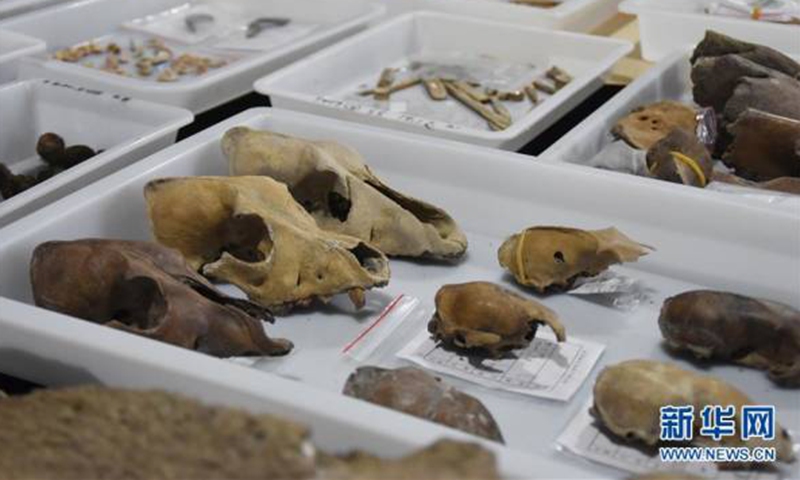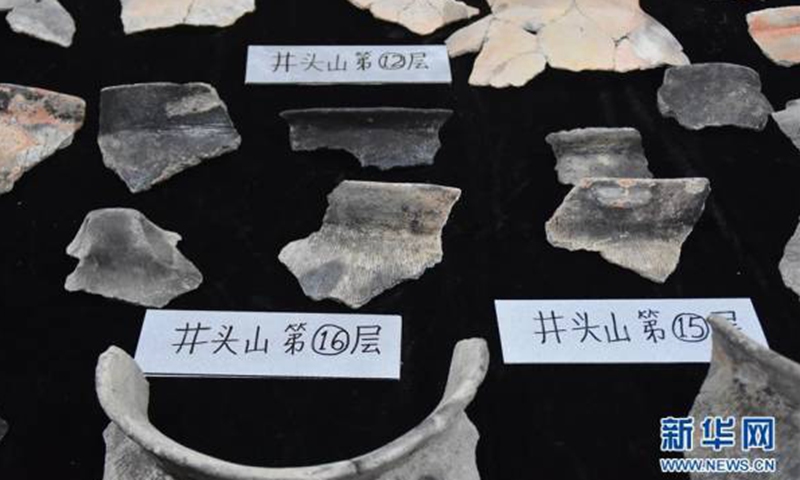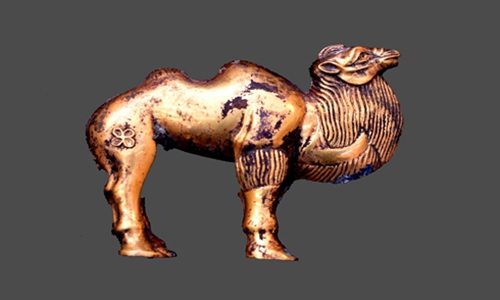Pictured are items unearthed from the 8,000-year-old prehistoric shell mound in Yuyao, East China’s Zhejiang province. Photo: Xinhua
A prehistoric shell mound believed to be 8,000 years old has been discovered in Yuyao, East China’s Zhejiang Province, providing important research materials for studying marine development and how early humans adapted to the marine environment.

The shell mound was discovered at the site of the Jingtoushan ruins in the province, and is the earliest and most deeply buried shell mound site unearthed in the coastal areas of China, local authorities said on Saturday.
The Jingtoushan ruins in the city of Yuyao administered by Ningbo city were firstly discovered during a drilling survey for factory construction in 2013.

Tests at the lab of Peking University and three other domestic and overseas labs concluded that the site is between 7,800 and 8,300 years old, 1,000 years older than the city’s Hemudu culture ruins, which are believed to be the origins of humanity in Ningbo.
A large number of exquisite artefacts and leftovers of shellfish have been unearthed since the digging began in September of 2019.

Pictured are items unearthed from the 8,000-year-old prehistoric shell mound in Yuyao, East China’s Zhejiang province. Photo: Xinhua
Among the unearthed are cockles, oysters, mussels, clams and spiral shells.
Items such as pottery, stone tools, wood, bones and shellfish, and the remains of early rice cultivation, as well as abundant aquatic, terrestrial plants and animal remains have also been unearthed.
By far the deepest buried and earliest site in southeast China’s coastal areas, the site could be direct evidence of the sea level 8,000 years ago and provides important research materials for studying the evolution of the natural environment and how early humans adapted to the marine environment.

It also provides materials to explore the source of Hemudu culture and to establish the nature of pre-Hemudu culture.
Zhao Hui, a professor at Peking University’s school of archeology and museology, said at a press conference in Ningbo that the civilizations represented by Jingtoushan and Hemudu culture exhibited differences and similarities.
Investigation suggested Jingtou mountain culture was probably a predecessor of Hemudu, Zhao said.
Liu Zheng, a member of the China Cultural Relics Academy, told the Global Times that with ample evidence to represent a civilization, the official 5,000 years of continuous Chinese civilization might be extended to 8,000 years.

In 2019, the archeological ruins of the city of Liangzhu in Zhejiang gained worldwide recognition and prompted Chinese officials to cite them as proof of at least 5,000 years of continuous Chinese civilization.
Hemudu culture plays an extremely important role in the Yangtze River area and the whole of southern China. The discovery of the Hemudu site in 1973 established a new historical view that both the Yangtze River basin and the Yellow River basin are cradles of Chinese civilization.
The shell mound, a type of ancient human settlement site, is characterized by a large number of discarded shells left over from the food eaten by ancient humans